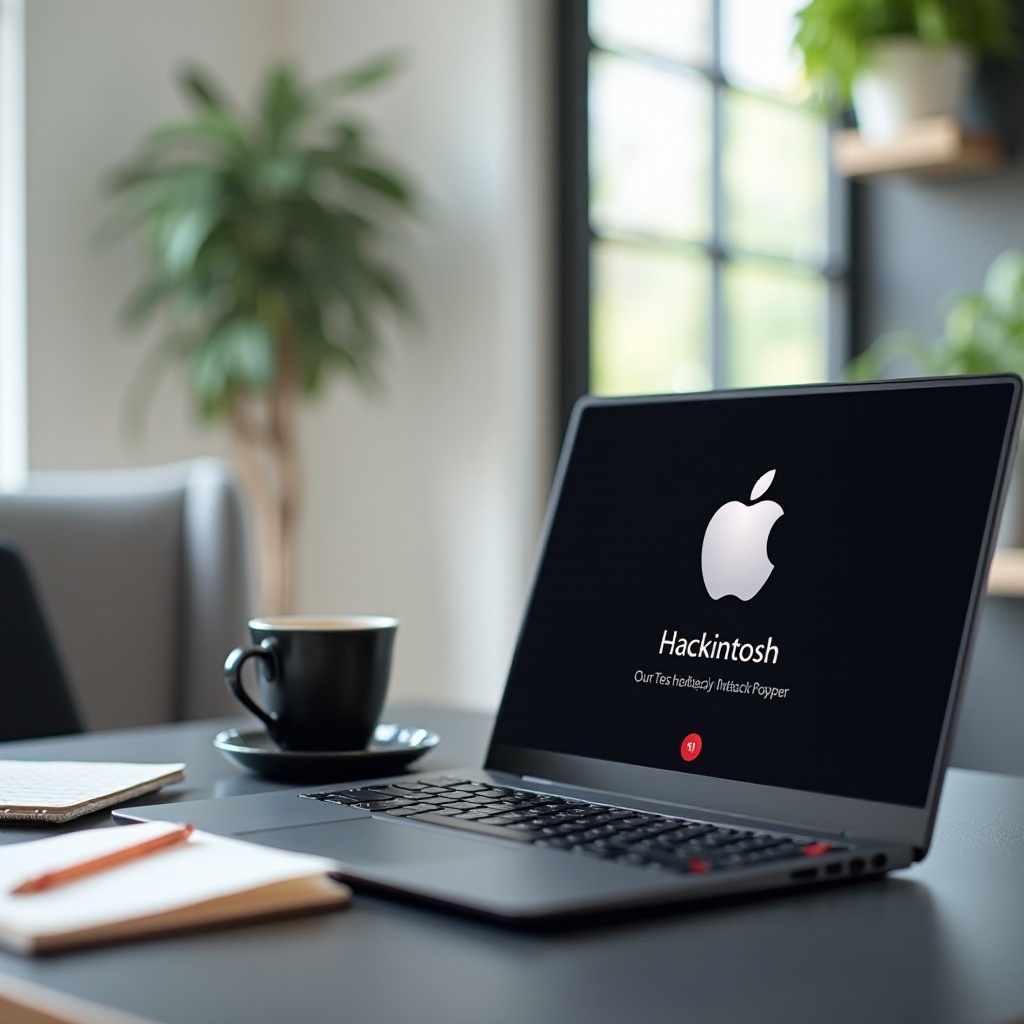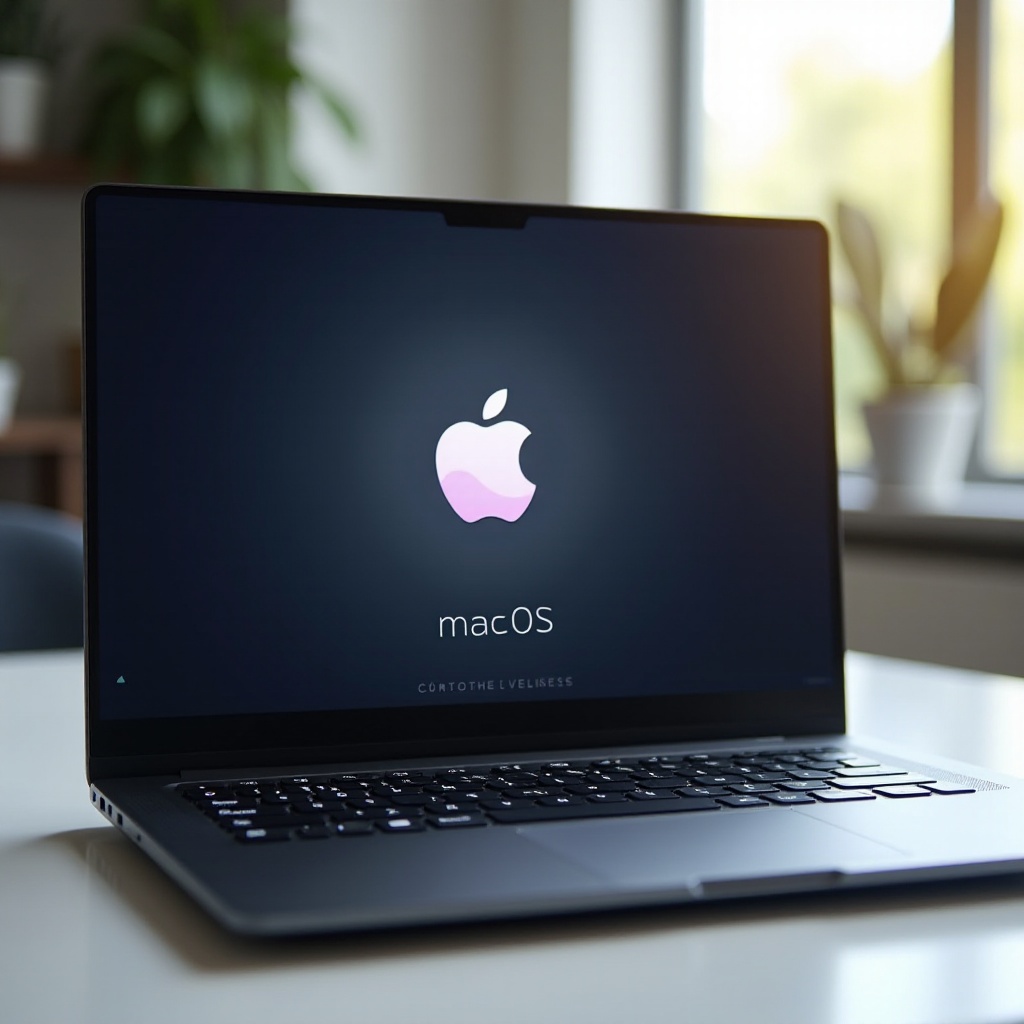Introduction
Installing a Hackintosh on an ASUS TUF Gaming Laptop can be a challenging yet rewarding venture for tech enthusiasts. This guide will walk you through every step, from ensuring compatibility to setting up macOS for the first time and resolving common issues. Whether you’re a seasoned hacker or a beginner eager to embark on this exciting journey, this comprehensive guide has you covered.

Pre-installation Requirements
Before diving into the installation process, certain prerequisites need to be met.
Ensuring Compatibility
Not all ASUS TUF Gaming Laptops can support macOS due to hardware limitations. Start by checking if your laptop’s CPU, GPU, and other components are compatible with macOS. Websites like tonymacx86 and Hackintosh Zone provide compatibility lists and user experiences.
Gathering Necessary Tools and Software
You will need a few essential tools and software to kickstart the installation process:
– A USB flash drive (at least 16GB)
– Access to a Mac or a Working Hackintosh
– A copy of macOS installer (preferably the latest version)
– UniBeast: Software to create a bootable USB drive
– MultiBeast: Post-installation tools to set up your Hackintosh
– Clover EFI bootloader
– Compatible kext files for your specific hardware
Preparing Your ASUS TUF Gaming Laptop
Once you have the required tools and software, prepare your ASUS TUF Gaming Laptop for the installation.
Backing Up Your Data
Always safeguard your data by performing a complete backup. Use an external storage device or cloud service to back up critical files, documents, and applications.
Accessing and Configuring BIOS Settings
- Restart your laptop and press the BIOS key (usually F2 or Del) during boot.
- Once in BIOS, navigate to the ‘Advanced’ tab.
- Set ‘Secure Boot’ to Disabled.
- Change ‘OS Type’ to ‘Other OS’.
- Enable ‘VT-d’ and ‘XHCI Hand-off’.
- Save the changes and exit BIOS.
These changes are vital to ensure that macOS installs and functions correctly on your laptop.
Creating a macOS Bootable USB Drive
A bootable USB drive is mandatory for installing macOS.
Downloading macOS
Using a Mac or another Hackintosh:
1. Visit the Mac App Store.
2. Download the latest macOS version (e.g., macOS Ventura).
3. Once the download completes, the installer will open automatically.
Using UniBeast to Create the Bootable USB
- Download and install UniBeast.
- Launch UniBeast and follow the on-screen instructions.
- Select ‘Create Bootable USB’.
- Choose the downloaded macOS installer.
- Select your USB drive as the destination.
- Configure the bootloader options (Clover Legacy or UEFI).
- Complete the process and wait for UniBeast to finish.
Installing macOS on Your Laptop
Now it’s time to install macOS on your ASUS TUF Gaming Laptop.
Booting into the macOS Installer
- Insert the created bootable USB drive.
- Restart your laptop and press the Boot Menu key (usually F8 or F12).
- Choose the USB drive as the boot device.
- Select ‘Boot macOS Install from [USB drive]’ from the Clover bootloader menu.
Partitioning Your Drive
- The macOS installer will load.
- Select ‘Disk Utility’ from the Utilities menu.
- Choose your laptop’s internal drive.
- Click ‘Erase’ and set the format to ‘APFS’ and the scheme to ‘GUID Partition Map’.
- Close Disk Utility.
The Installation Process
- Proceed with the installation by selecting ‘Install macOS’.
- Choose the partition you created.
- Follow the on-screen instructions to complete the installation.
- The laptop will restart several times during the process. Each time, use the boot menu to select the USB drive and boot from ‘Boot macOS Install from [partition]’.

Post-Installation Configuration
After installing macOS, there’s still work to be done.
Setting Up macOS for First Use
- Upon initial boot, macOS will guide you through the setup process.
- Configure your user account, time zone, and other preferences.
- Ensure macOS boots properly without the USB drive by copying the necessary bootloader and kext files to your internal drive.
Configuring the Clover Bootloader and kexts
- Use MultiBeast to install Clover UEFI bootloader on your system drive.
- Copy essential kext files (drivers) for network, audio, and graphics to EFI/Clover/kexts/Other folder.
- Configure Clover settings according to your hardware. This might include editing the config.plist file to set up proper SMBIOS, graphics injection, and other parameters.
- Restart your laptop to ensure all configurations are correctly applied.
Troubleshooting Common Issues
Even a meticulous setup might encounter issues.
Resolving Boot Problems
If your system fails to boot:
1. Boot with verbose mode (-v) to identify the error.
2. Common issues might include incompatible BIOS settings, missing kext files, or incorrect Clover configuration.
3. Recheck and adjust BIOS settings, add necessary kexts, or modify the config.plist file accordingly.
Fixing Audio and Network Issues
If you face trouble with audio or networking:
1. Make sure you are using the correct kext files for your audio (e.g., AppleALC) and network (e.g., IntelMausi, Atheros).
2. Verify proper installation of these kexts and their placement in the correct folders.
3. Use software like ‘Kext Utility’ to repair permissions and rebuild caches.

Conclusion
Installing Hackintosh on an ASUS TUF Gaming Laptop can transform your computing experience, providing the sleek interface and robust features of macOS on your gaming hardware. Although the process involves multiple steps and potential troubleshooting, the end result is a fully functional macOS system on your ASUS laptop. Enjoy the unique capabilities and the satisfaction of having a Hackintosh!
Frequently Asked Questions
What should I do if the startup fails?
Ensure you’ve configured the BIOS settings correctly, added the necessary kext files, and used the right boot flags. Boot in verbose mode to diagnose the issue.
How can I improve the graphics performance on my Hackintosh?
Use the appropriate graphics drivers for your GPU and configure the Clover bootloader to inject correct settings. Update macOS and your GPU drivers.
Are there any legal issues with creating a Hackintosh?
Creating a Hackintosh violates Apple’s End User License Agreement (EULA) as macOS is designed to run only on Apple hardware. Proceed with awareness of these legal considerations.

